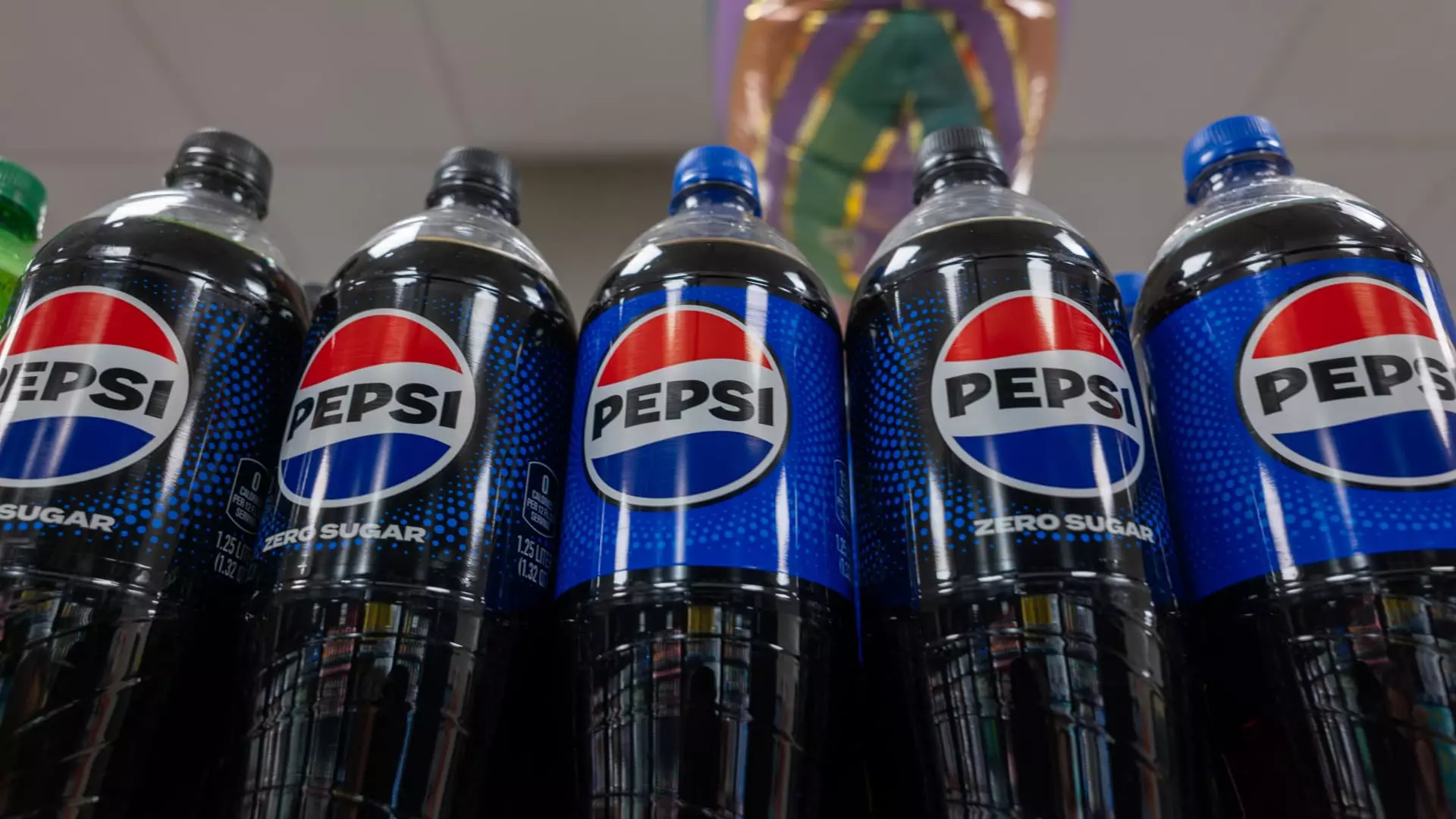In a world where consumer preferences shift rapidly, PepsiCo recently unveiled a quarterly report that encapsulates both resilience and vulnerability. The company showcased a net income of $1.83 billion, translating to $1.33 per share; however, this represents a decline from $2.04 billion—or $1.48 per share—from the same period last year. While international sales buoyed the bottom line, the North American market demonstrated an unsettling trend of lagging demand that raises eyebrows for future performance.
Economic conditions have become a focal point in determining corporate stability, and PepsiCo is no exception. With a CEO as experienced as Ramon Laguarta at the helm, one would expect a strategy to navigate through these turbulent waters. Yet, the company has projected an uncertain future, cutting its core earnings forecast amid a backdrop of new tariffs and economic volatility. Does this indicate a systemic issue within corporate America, or is it merely a reflection of a sporadically slumping economy?
The Troublesome Terrain of Consumer Spending
PepsiCo’s predicament is not isolated; it is symptomatic of a larger trend influenced by inflationary pressures and evolving consumer spending habits. As consumers become increasingly value-conscious, discretionary spending on brands perceived as non-essential continues to decline. This has manifested in a reported drop of 1% in volume within PepsiCo’s domestic food business and a 3% decline in the beverage unit. The question arises: how long can traditional models of consumer demand sustain a profitable trajectory?
This sentiment finds support in the numbers: PepsiCo’s overall net sales decreased by 1.8%, contrasting sharply with their organic revenue—a figure that rose nominally by 1.2%. Such data points reveal a disconnect that brands must address immediately. Will PepsiCo continue to chase diminishing returns in conventional product lines, or can it pivot to embrace new market realities?
Strategies to Navigate Uncertainty
In recognizing the challenges ahead, PepsiCo has announced plans to invigorate its North American strategy, particularly by expanding its reach into multicultural and functional products. This pivot showcases a willingness to adapt, but the efficacy of these measures remains to be seen. The acquisition of Poppi, a prebiotic soda, complements these efforts, yet one cannot help but wonder if these moves are reactionary rather than strategic.
What’s worth noting is the company’s commitment to engaging consumers directly and optimizing in-store product availability. This grassroots approach might yield results in the short term, but long-term success hinges on a broader vision. Is PepsiCo merely attempting to patch its existing business, or is there a deeper understanding of market dynamics at play? Time will tell, but given the current economic climate, the stakes are high.
Spotting Glimmers of Hope
Despite these challenges, it’s crucial to highlight that PepsiCo isn’t entirely mired in difficulty. Innovative products like Pepsi Zero Sugar have carved out market share, serving as bright spots in an otherwise concerning portfolio. Similarly, brands like Miss Vickie’s chips and Quaker’s rice cakes have demonstrated promising growth in net revenue, suggesting that consumer loyalty still exists in well-crafted offerings.
However, these successes should not obscure the stark challenges ahead. The company is poised to face ongoing turbulence related to global trade developments and increased supply chain costs, exacerbating the pressure on its already fragile North American operation.
Looking Ahead: A Cautious Outlook
As we scrutinize PepsiCo’s quarterly performance, a pattern emerges—not just about a cornerstone of American business, but about the vulnerabilities companies face in today’s economic landscape. While the company’s plans to focus on multicultural and value-driven products might yield short-term benefits, the long and winding road ahead necessitates greater adaptability.
The uncertainty surrounding current and future consumer behavior, compounded by external economic pressures, paints a precarious picture. The once-formidable food and beverage titan must reckon with the challenges of maintaining consumer loyalty while innovating in real-time. Challenges seem to abound; standing still is simply not an option.

